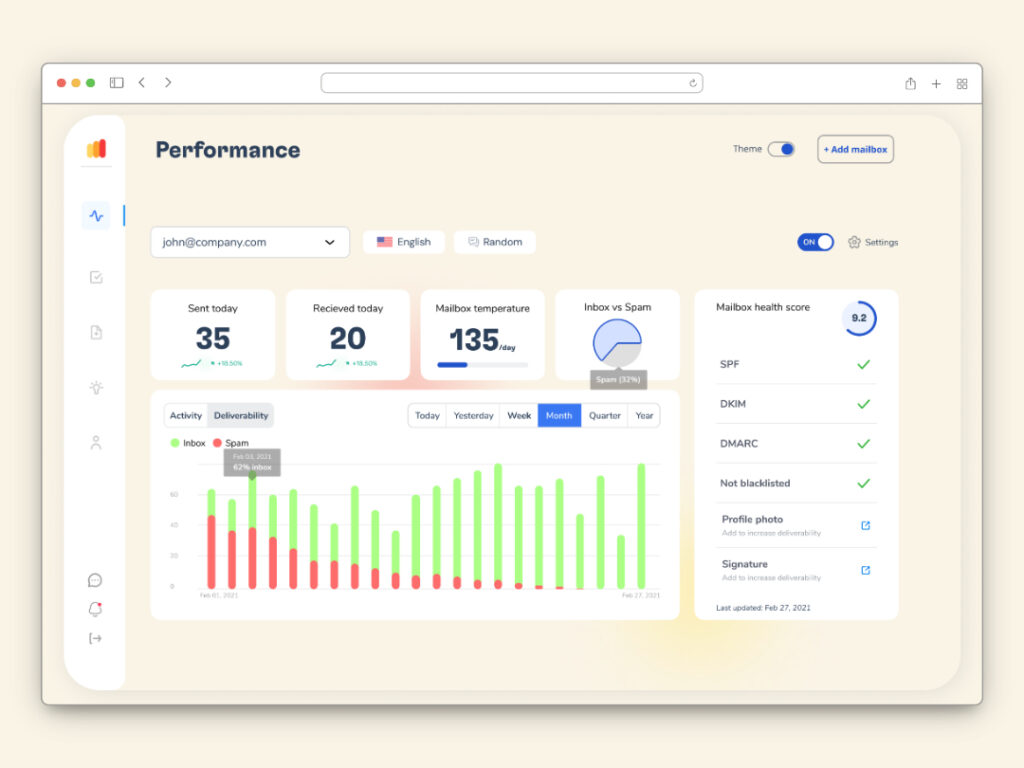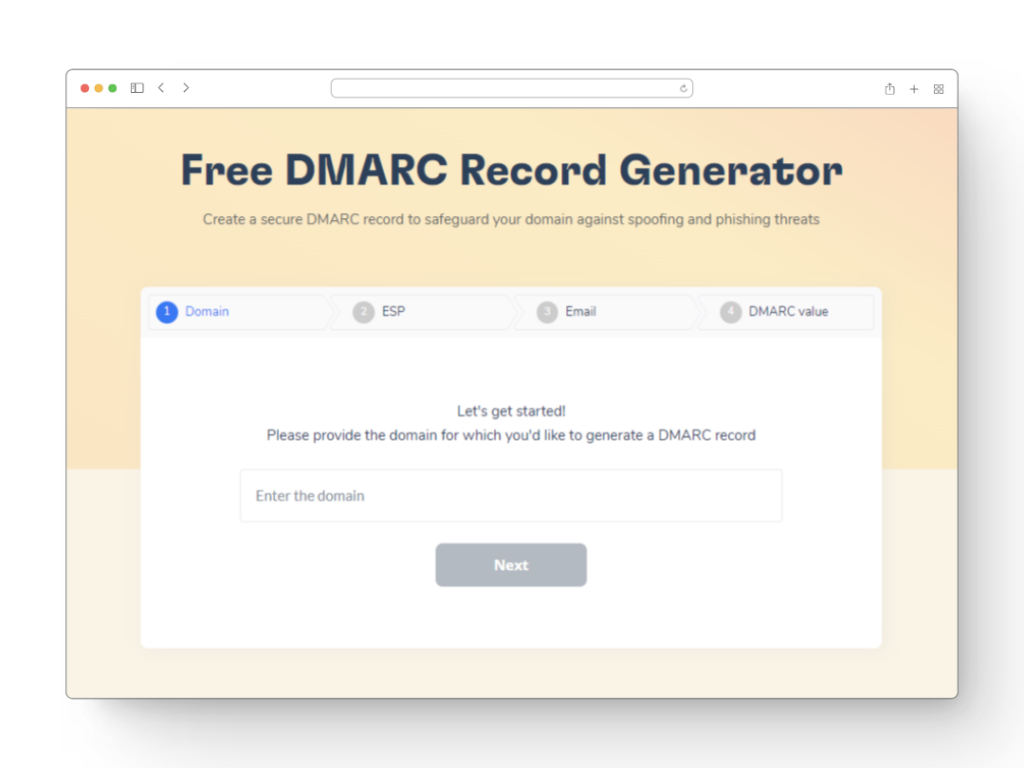In email marketing, the path from “send” to “seen” is somewhat convoluted. Consider this: a lot of emails never find their intended inbox, which could affect companies and marketers mostly dependent on email correspondence.
Mailjet, a reputable participant in the email marketing market with its sophisticated tools and capabilities meant to simplify this path. Although Mailjet’s strong infrastructure seeks to assist successful email campaigns, it works in a difficult environment where deliverability remains a major concern for users, much as all email service providers.
Deliverability is about making sure it gets to the inbox – not just any inbox but the correct one at the correct moment, not only by email. Mailjet users among other platforms may find difficulties maximizing their deliverability rates as the email ecosystem develops. These might result from anything from technical aspects of email delivery to content quality to email list management.
Let’s examine the complex world of email deliverability inside Mailjet, learn the subtleties of what affects it, and find techniques to improve the dependability and potency of your email campaigns.
What is email deliverability?
Beyond just sending an email, email deliverability is the effective placement of your emails into the recipient’s mailbox, therefore avoiding spam filters or outright rejections. The real measure of an email marketer’s capacity to consistently reach the inboxes of their audience is deliverability.
Components of Email Deliverability
Starting with IP reputation, which shows the trustworthiness of the IP address from which emails are delivered, email deliverability is impacted by several important aspects. Strong IP credibility raises the likelihood of emails being approved by servers of receivers. Not less significant is the Domain Reputation, which evaluates the legitimacy of the email’s original domain and aids in spam flag avoidance.
Sender Authentication is critical, involving protocols like SPF (Sender Policy Framework), DKIM (DomainKeys Identified Mail), and DMARC (Domain-based Message Authentication, Reporting, and Conformance). These protocols authenticate the sender’s legitimacy and protect against email spoofing, enhancing deliverability.
The quality of content also plays a vital role; well-crafted, engaging, and appropriately formatted content is more likely to evade spam triggers and engage recipients. Additionally, Engagement Rates from recipients (such as email opens, replies, and forwards) are monitored by email services to gauge sender reputation, with higher engagement generally fostering better deliverability.
Maintaining List Hygiene by regularly updating and pruning the email list to remove inactive or non-responsive addresses is crucial. This not only ensures a focused and engaged audience but also preserves the sender’s reputation by minimizing bounces and unproductive interactions.
Common Metrics to Measure Deliverability
Among the metrics used to gauge email deliverability, Open Rates stand out, indicating the percentage of emails opened and suggesting how many reached the intended inboxes effectively. Bounce Rates, which reflect the frequency of emails failing to be delivered (due to temporary issues like full inboxes or permanent problems like invalid addresses), are also critical. High bounce rates can damage a sender’s reputation. Lastly, Spam Complaints are a serious concern, as they directly affect a sender’s ability to reach their audience by impacting their reputation and deliverability if too many recipients mark emails as spam.
Common email deliverability issues

Like any email service provider, Mailjet could run across a variety of deliverability problems that would affect the potency of its email messages. Knowing these particular difficulties will assist in problem diagnosis and application of more successful email techniques. Mailjet customers could run into some typical deliverability problems here:
IP Reputation Problems. If Mailjet’s IP addresses are used by multiple customers, the actions of one user could negatively affect the reputation of the IP for all users. If these IPs are blacklisted due to spammy behavior from one or more users, this could lead to a reduction in deliverability for others.
Poor Domain Reputation. Similar to IP reputation, the domain reputation can be tainted if associated with spam-like activities or poor emailing practices. This can lead to emails being blocked or sent to spam folders.
Sender Authentication Issues. Problems with SPF, DKIM, or DMARC records can lead to emails being flagged as unauthenticated, which often results in them being rejected by recipient servers or placed in spam folders.
High Bounce Rates. Mailjet might experience issues with high bounce rates if users send emails to outdated or incorrect email addresses. This not only affects current campaign statistics but also harms the sender’s reputation over time.
Low Engagement Rates. If the emails sent through Mailjet do not engage recipients, this could lead to a decrease in sender reputation. Recipient servers monitor engagement levels (like opens and clicks) to determine if incoming emails are wanted by their users.
Spam Complaints. If recipients frequently mark Mailjet-sent emails as spam, this can severely impact deliverability. High spam complaint rates are a strong indicator to ISPs that the content is not wanted, leading to future emails being blocked or filtered.
Content Issues. Emails containing certain keywords, poor HTML coding, or other elements typically associated with spam can trigger spam filters. Even if the content is legitimate, poorly designed emails might still end up in spam folders.
List Management Problems. Not maintaining a clean and updated email list can result in sending emails to non-existent users which leads to hard bounces, or sending too many unwanted emails, which can increase spam complaints.
Compliance Issues. Non-compliance with international email sending regulations like GDPR can also impact deliverability. These regulations require adherence to specific protocols about user consent and data handling, and failing to comply can not only lead to legal issues but also affect email deliverability.
Accuracy of deliverability metrics
Email deliverability indicators are important for determining the performance of email marketing efforts, but they are not always as exact as marketers would want. This section investigates the accuracy of typical deliverability measures, including as open rates, and assesses the dependability of Mailjet’s reporting figures, analyzing any anomalies that may alter the data.
Why Deliverability Metrics May Not Be Accurate
Open rates, for example, are traditionally tracked using a tiny pixel that loads when the recipient opens an email. However, this method has significant limitations. If an email client blocks images or if the user reads the email without enabling image display, the open will not be registered, leading to underreporting of open rates. Conversely, email previews can sometimes trigger the tracking pixel, falsely inflating open rates. Additionally, recent privacy updates in various email platforms, like Apple’s Mail Privacy Protection, now preload images to protect user privacy, which can further skew open rate data by showing higher than actual engagement.
Moreover, the distinction between emails being delivered to a server (delivery) and being placed into a recipient’s inbox (deliverability) often confuses marketers. Metrics might show high delivery rates even if many emails end up in the spam folder, misleading marketers about the true effectiveness of their campaigns.
Factors Contributing to Potential Discrepancies
The increasingly sophisticated algorithms used by ISPs and email services to filter spam can sometimes incorrectly classify legitimate emails as spam, affecting deliverability metrics. Furthermore, ISPs frequently update their filtering criteria and policies, which can affect how emails are received and reported in deliverability metrics. Delays in data processing and reporting can also lead to discrepancies between real-time campaign performance and reported metrics.
Solving deliverability issues with Warmy.io

In the landscape of email marketing, establishing and maintaining a strong sender reputation is essential for ensuring that your messages reach your audience’s inboxes. This is where Warmy.io steps in – a cutting-edge email warm-up tool designed to tackle deliverability challenges head-on. Warmy.io helps users gradually build and sustain a positive sender reputation, a crucial element in improving overall email deliverability. By simulating realistic email sending and engagement scenarios, Warmy.io enables email servers to recognize and trust outgoing mails from your domain, significantly reducing the likelihood of being marked as spam.
Features and Promotions of Warmy.io
Warmy.io offers a comprehensive suite of tools tailored to refine and enhance email deliverability:
Free Email Deliverability Test
This tool provides an immediate look into where your emails are landing across various email providers, offering insights into your email deliverability score and any potential blacklisting or authentication issues.
SPF and DMARC Record Generator
Essential for sender authentication, these tools help you set up the necessary DNS records to verify your emails, ensuring they are recognized by ISPs as legitimate and reducing the risk of spoofing and spam labeling.
Template Checker, Signature Builder, Mailbox Calculator, Sequence Builder
Each tool is designed to optimize different aspects of your email campaigns, from ensuring that your templates are up to industry standards to helping you manage and scale your outreach effectively.
In addition to these free tools, Warmy.io promotes a 7-day free trial that allows users to test and measure the performance enhancements provided by the service. This trial is an excellent opportunity for businesses to see firsthand how improving their email practices can lead to better inbox placement rates.
Leverage the power of Warmy.io to enhance your sender reputation and ensure your emails reach their intended destination. Sign up for the free trial today, explore the various tools available, and take a significant step towards solving your email deliverability challenges.
Conclusion
Mailjet places a high value on deliverability. The platform’s capacity to ensure that emails arrive in the correct inboxes has a direct impact on its reputation as a trustworthy email service provider. When deliverability difficulties develop, they must be addressed immediately and effectively to avoid long-term harm to customer pleasure and brand reputation.
In this environment, technologies like Warmy.io are an invaluable resource for people and businesses trying to gain control over their email deliverability. Users can considerably reduce the risks associated with poor deliverability by implementing technologies that improve sender reputation and assure compliance with proper emailing practices.
📜 Related articles:
FAQ
What is Mailjet deliverability?
Mailjet deliverability refers to the ability of emails sent via the Mailjet platform to successfully reach the recipients' inboxes without being flagged as spam or blocked by email servers.
How does Mailjet manage IP reputation?
Mailjet manages IP reputation by monitoring sending practices and implementing protective measures such as throttling, providing shared and dedicated IP options, and guiding users on best practices to maintain a good reputation.
What is the impact of Mailjet's shared IPs on deliverability?
Using shared IPs can affect deliverability if other users on the same IP engage in poor email practices. However, Mailjet monitors these IPs closely to mitigate any negative impacts and offers dedicated IP options for users with higher sending requirements.
What should I do if my Mailjet deliverability suddenly drops?
If you notice a sudden drop in deliverability, check for increases in bounce rates or spam complaints, review any recent changes in your email content or list management, and consult Mailjet’s support for a detailed analysis and specific guidance.
How often should I clean my email list to maintain Mailjet deliverability?
Regular list cleaning is crucial for maintaining deliverability. It is recommended to review and clean your email list periodically, at least once every six months, to remove inactive subscribers and incorrect email addresses.












